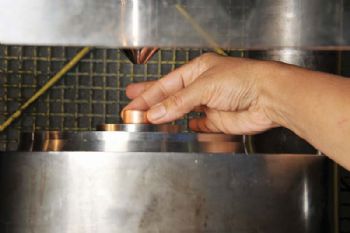
Jeff Kiernan, commercial director of Dawson Shanahan Ltd (
www.dawson-shanahan.co.uk) — a leading specialist in cold forming and the machining of high-precision components — says that in an increasingly cost-sensitive global economy, manufacturers are under pressure on two fronts: from the rising prices of the metals they use for their products; and from the need to keep the prices of their finished goods competitive.
Elaborating further, he adds: “It is vital, therefore, that they find ways to cut production costs while maintaining the quality of their finished goods; and although almost all engineered products and constituent parts are designed to a budget, it is not unusual for some components to be over-engineered or over-priced.
“Such situations can be overlooked if the overall system cost comes in on — or under — budget, but there can still be waste in the system.
“One approach to quantifying waste is to analyse a component using a cost/function matrix.
“This identifies unnecessary cost and parts whose function does not justify their cost.”
Mr Kiernan offers the example of an automotive wiring harness, and says that by reviewing the design of the circuit, it might be possible to minimise the number of connectors by, for example, creating common connection points, replacing customised connectors with generic alternatives, and improving harness routing — or even combining harnesses to minimise wire usage.
“The result of this review is likely to be a fall in costs, without affecting functionality of the part, and there is a longer-term benefit to the final customer of easier installation and maintenance — and even improved energy efficiency and overall reliability.
“Similarly, in a production operation, and if the objective is to increase profitable capacity, it must be determined if the most effective solution is simply to increase capacity in the most efficient manner, or if profitable capacity can be improved by eliminating inefficiencies in existing production systems or reducing the number of process steps.”
Mr Kiernan goes on to say that, where production volumes are high, even a minimal saving on each part in terms of materials, production stages or production time can represent a significant benefit — even without the expense of redesigning the part.
“For example, it might be possible to switch from traditional subtractive techniques — such as milling, boring and grinding — to a process such as precision cold forming.”
Significant savings
Summarising this process, Mr Kiernan says that cold forming is an established — albeit little-known — process that can reduce the amount of scrap metal generated in production by up to 60% when compared with machining processes, and that it can also be used to manufacture high-quality intricately shaped parts.

“Copper is perhaps the most commonly used material for cold forming, and companies currently machining high volumes of components from tellurium copper (CuTe) rods or bars can derive significant benefits from the process; and while this material is readily machinable, operations such as milling, grinding, turning and drilling all produce large volumes of waste.
“For example, a typical circular hollow-shaped part used in a power generation or distribution unit with a finished weight of 345gm would typically start with a solid section of rod weighing 1,071gm, from which around 68% of the material is removed as waste.
“In another example, nozzles for plasma and laser welding machinery have traditionally been machined from solid bar, again generating considerable volumes of waste.
“Using cold forming sees this waste cut from 177gm per part to just 18gm; and while each part still requires a final machining operation, the cost, speed of production and finished quality are far superior.”
Using precision cold forming, a metallic blank (this can be sawn or cropped from a round bar or wire, or it can be a cold-headed pre-form) is shaped using a high-pressure punch and die at ambient temperatures.
The resulting part mirrors the shape of the tooling precisely; dimensional tolerances of a few microns are possible — “equivalent to those achievable from the best CNC machine tools”.
Improved structure
Mr Kiernan further highlights the facts that precision cold forming is fast, consistent and repeatable, and that — unlike with conventional machining, where the material removal processes cut across the grain structure of each part — cold forming causes the granular structure of the metal to align to the contours of the die, ensuring that its tensile strength is maintained.
“Furthermore, the internal surfaces of cold-formed parts take on a mirrored appearance, reducing the need for finishing and thereby helping to reduce both cost and manufacturing time — and parts undergo work hardening during the cold-forming process, improving their machinability and durability still further.

“Work hardening reforms the structure of the metal in a way that prevents further dislocations, resulting in a stronger component.
“As this increase in strength is comparable to that of heat treating, it can be more cost-effective to cold-work a less costly and weaker metal than to hot-work a more-expensive metal, particularly where a precision finish is required.
“Along with producing simple high-volume components, cold forming is now increasingly used to produce precision components; and with appropriate process simulation and tool design, a wide variety of metals can be formed using the process.”
Historically, the cold forming of stainless steel has been problematic, because of its hardness and mechanical properties.
However, with the development of CAD simulation, complex punch and die sets that allow for ‘the required controlled deformation’ can now be designed, thereby opening up many new opportunities for the manufacture of precision parts in the health-care sectors — including surgical instruments and associated equipment.
In conclusion, Mr Kiernan said: “As we have seen, it is vital in today’s highly competitive global economy that manufacturers engineer unnecessary costs from the parts they produce.
“Switching to tried-and-tested manufacturing processes such as precision cold forming could play significant role in helping them to achieve this aim.”